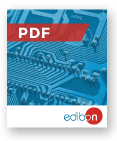
NEW Energy leaflet
With our complete Energy area, EDIBON gives answer to the academic demand for teaching and learning concepts of Energy, in an easy and practical way.
HerunterladenEnergie ist eine natürliche Ressource, die für eine spezifische Nutzung extrahiert und transformiert wird, um den Bedarf der Gesellschaft an Dienstleistungen und Warenproduktion zu decken. Was die Primärenergiequellen betrifft, so gibt es erneuerbare Energien und nicht erneuerbare Energien.
Mehr sehenErneuerbare Energien sind solche, die aus unerschöpflichen Quellen oder Quellen mit Regenerationsfähigkeit stammen. Bemerkenswert sind die erneuerbaren Energien: Photovoltaik-Solarenergie, Solarwärmeenergie, Windenergie, Meeresenergie, Geothermie und Biokraftstoffe.
Nicht erneuerbar oder konventionelle Energien sind solche, die aus begrenzten, in der Natur vorkommenden Quellen stammen und im Allgemeinen eine große Umweltbelastung verursachen. Die häufigsten sind fossile Brennstoffe wie z.B. Kohle, Öl und Erdgas. Und auf der anderen Seite Nuklearenergie aus Kernspaltung und Fusion.
Kraftwerke sind notwendig, um Strom aus diesen Primärenergiequellen zu gewinnen. Beispiele sind Kohlekraftwerke, Kombikraftwerke, Kernkraftwerke, Kernkraftwerke, Solarthermische Kraftwerke, Photovoltaikkraftwerke, Wasserkraftwerke, Windkraftwerke, etc.
Nichterneuerbare Energien sind heute zunehmend knappe Güter, die zusammen mit globale Erwärmung das Konzept Energieeffizienz immer wichtiger werden lassen. Es werden immer strongchrittlichere technologische Lösungen untersucht, um eine maximale Effizienz bei der Energieerzeugung, bei den Energiesystemen für den Transport sowie bei der EnergieaufnahmeKontrolle und Verwaltung zu erreichen. Technologie und Energieeffizienz gehen Hand in Hand. Ein Beispiel dafür ist der zunehmende Ausbau von intelligenten Netzen. Sie reichen von der Stromerzeugung mit erneuerbaren Energien und der Stromübertragung und Verteilungssystemen bis hin zum Management des Energieverbrauchs durch intelligente Messsysteme, wie z.B. Smart Meter.
Siehe Produkte5.1.- SMART GRIDS UND POWER SYSTEMS
5.2.- MIKROGRIDE
5.3.- ERNEUERBARE ENERGIEN
5.4.- KONVENTIONELLE ENERGIEN
5.5.- ENERGIESPEICHER
5.6.- HOCHSPANNUNGS- UND ELEKTRISCHE SCHUTZSYSTEME
5.7.- INSTALLATIONEN UND WARTUNG